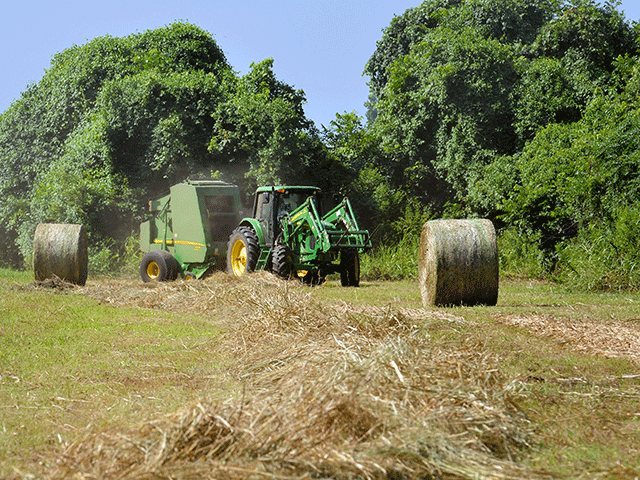Maintenance Helps Prevent Baler Fires
Tips on How to Avoid Baler Fires
OMAHA (DTN) -- While most of the hay baling season is completed, safety should be everyone's top priority when baling, regardless of the season. As many will bale up crop residue (corn and soybean stalks) bales after the fall harvest, baler safety is import whether it is May or October.
Regular equipment maintenance is an important task, according to Leslie Woolington, risk management and loss control agent with Mississippi State University Extension Service.
Visual inspection of the equipment is also a vital task, she said.
Woolington said the eyes and ears are the most important features to a baler operator. "If something looks, sounds or feels different, stop and investigate," Woolington said in a Mississippi State Extension press release.
"Bearings and other mechanical parts will usually give an indication of a problem before they turn into emergency problems, so don't ignore these signs."
P[L1] D[0x0] M[300x250] OOP[F] ADUNIT[] T[]
For example, if the color of the dust coming out of the baler is changing, this could be a clue that a fire is starting; paying attention to the dust color could help catch when the fire is smoldering and before it becomes a full-fledged fire, she noted.
Franklin County hay grower and former firefighter Horance Godbold has seen his fair share of baler fires.
If a hay operator smells something burning, this is another good indication a fire could be smoldering in a baler. Keeping a window open in a cab of the tractor might be a good idea, Godbold said.
"If you smell something out of the ordinary, you need to get off the tractor and inspect the baler from all angles, because it's probably about to catch on fire if it's not already on fire."
While a fire extinguisher is must-have safety equipment with balers, both Woolington and Godbold also recommend other equipment which could prevent a baler fire.
Godbold always carries with him a pump sprayer with a nozzle tip to help put out a potential baler fire. He mixes water and dishwashing detergent, which make the water last twice as long.
Woolington said making sure the baler is clean before beginning to bale also can limit the chance of baler fires. A hay baler is really a big container for fire with the dry hay, dust and hydraulic fluid, she said.
"Eliminate any extra fire sources by cleaning the baler up thoroughly after each cutting," she said. "Use an air hose or leaf blower to blow out all fine pieces and dust."
Open the doors of the baler and clean around guards and shields to remove all dust and loose hay, Woolington said. Preventing excess hay to build up in different friction areas is an important step to avoid fires.
Do baler maintenance before the baling season to save time and money, as well as to help prevent fires, she said.
Russ Quinn can be reached at Russ.Quinn@dtn.com
Follow him on Twitter @RussQuinnDTN
(c) Copyright 2022 DTN, LLC. All rights reserved.




